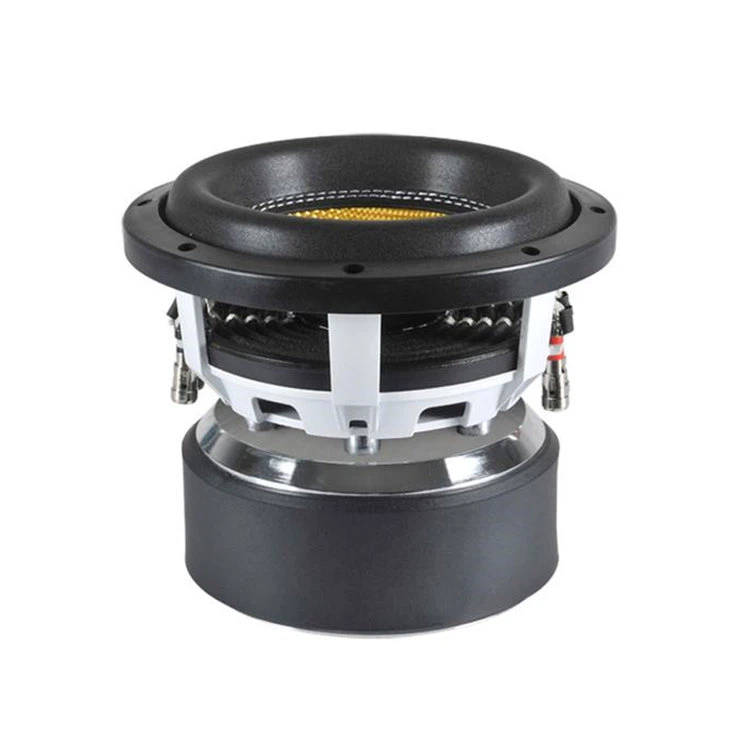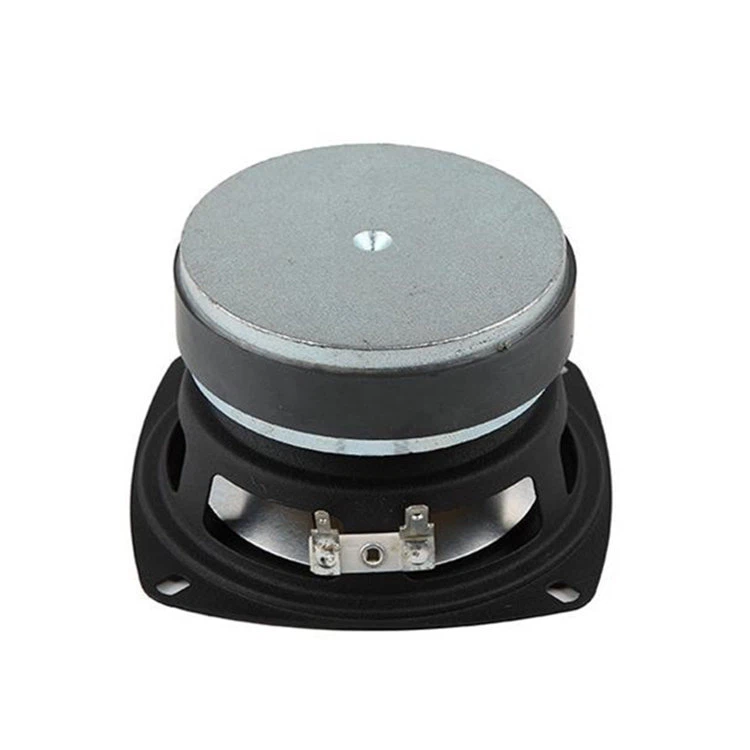What is the resistance of a speaker magnet to corrosion?
 Oct 30, 2025|
Oct 30, 2025| The resistance of a speaker magnet to corrosion is a critical factor that directly impacts the performance and longevity of speakers. As a speaker magnet supplier, I have witnessed firsthand the importance of understanding and optimizing this aspect. In this blog, we will delve into the details of speaker magnet corrosion resistance, exploring the factors that influence it, the types of corrosion, and the measures we can take to enhance it.
Understanding Speaker Magnets and Corrosion
Speaker magnets are essential components in audio systems, responsible for converting electrical signals into mechanical vibrations that produce sound. They are typically made from materials such as ferrite, neodymium, or samarium - cobalt. Each material has its own unique properties, including different levels of corrosion resistance.
Corrosion is a natural process that occurs when a metal reacts with its environment. In the case of speaker magnets, exposure to moisture, oxygen, and certain chemicals can lead to the degradation of the magnet material. This degradation not only weakens the magnetic field but also affects the overall performance of the speaker, resulting in distorted sound, reduced volume, and a shorter lifespan.
Factors Influencing Corrosion Resistance
Material Composition
The type of material used in the speaker magnet plays a significant role in its corrosion resistance. For example, ferrite magnets are relatively resistant to corrosion due to their ceramic - like structure. Ferrite is an oxide - based material, which means it has a lower tendency to react with oxygen and moisture compared to pure metals. On the other hand, neodymium magnets are very strong but are more prone to corrosion because neodymium is a highly reactive rare - earth metal. Samarium - cobalt magnets also offer good corrosion resistance, along with high temperature stability and strong magnetic properties.
Coating and Surface Treatment
Applying a protective coating is an effective way to enhance the corrosion resistance of speaker magnets. Coatings can act as a barrier between the magnet material and the corrosive environment. Common coatings include epoxy, nickel, zinc, and parylene. Epoxy coatings are widely used because they are cost - effective and provide good protection against moisture and chemicals. Nickel and zinc coatings offer excellent corrosion resistance and also improve the appearance of the magnet. Parylene is a thin, conformal coating that can provide a high level of protection even in harsh environments.
Environmental Conditions
The environment in which the speaker operates has a direct impact on the corrosion rate of the magnet. High humidity, saltwater exposure, and acidic or alkaline atmospheres can accelerate corrosion. For example, speakers used in outdoor settings, near the ocean, or in industrial areas are more likely to experience corrosion compared to those used in a controlled indoor environment. Temperature also plays a role, as higher temperatures can increase the rate of chemical reactions and thus speed up corrosion.
Types of Corrosion in Speaker Magnets
Rusting
Rusting is a common form of corrosion that occurs when iron - containing materials, such as some types of ferrite magnets or the metal parts associated with the magnet, react with oxygen and water. Rust is a reddish - brown compound (iron oxide) that can weaken the magnet structure and affect its performance.


Pitting Corrosion
Pitting corrosion is a localized form of corrosion that appears as small holes or pits on the surface of the magnet. It is often caused by the presence of chloride ions, which can break down the protective oxide layer on the magnet surface. Pitting corrosion can be particularly damaging because it can penetrate deep into the magnet material, leading to structural failure.
Galvanic Corrosion
Galvanic corrosion occurs when two different metals are in contact with each other in the presence of an electrolyte (such as water). The more reactive metal acts as an anode and corrodes at a faster rate, while the less reactive metal acts as a cathode. In speaker magnets, if different metals are used in the magnet assembly or in the surrounding components, galvanic corrosion can occur.
Measuring Corrosion Resistance
There are several methods to measure the corrosion resistance of speaker magnets. One common method is the salt spray test, where the magnet is exposed to a salt - water mist for a specified period of time. After the test, the magnet is inspected for signs of corrosion, such as rust, pitting, or discoloration. Another method is the immersion test, where the magnet is submerged in a corrosive solution for a certain period. Electrochemical methods, such as potentiodynamic polarization, can also be used to measure the corrosion rate of the magnet material.
Enhancing Corrosion Resistance in Speaker Magnets
Selecting the Right Material
As a speaker magnet supplier, we carefully select the materials based on the specific requirements of the application. For applications in harsh environments, we may recommend ferrite or samarium - cobalt magnets due to their better corrosion resistance. For applications where high magnetic strength is required and the environment is relatively mild, neodymium magnets with proper coating can be used.
Applying High - Quality Coatings
We invest in high - quality coating processes to ensure that our speaker magnets have excellent corrosion resistance. Our coating facilities are equipped with advanced technology to apply uniform and durable coatings. We also conduct strict quality control to ensure that the coatings meet the required standards.
Designing for Corrosion Resistance
In addition to material selection and coating, we also consider corrosion resistance in the design of the speaker magnet. For example, we avoid using dissimilar metals in close contact to prevent galvanic corrosion. We also design the magnet assembly to minimize the accumulation of moisture and debris, which can contribute to corrosion.
Our Product Range and Corrosion Resistance
We offer a wide range of speaker magnets, including Woofer Magnet, 10 Inch Speaker Magnet, and Subwoofer Impulse Triple Magnet. Each of our products is engineered to provide optimal corrosion resistance based on its intended application. Our ferrite - based speaker magnets are known for their natural corrosion resistance, while our neodymium magnets are coated with high - quality materials to protect them from the elements.
Conclusion
The resistance of a speaker magnet to corrosion is a crucial aspect that affects the performance and durability of speakers. By understanding the factors that influence corrosion resistance, the types of corrosion, and the methods to enhance it, we can provide high - quality speaker magnets that meet the needs of our customers. As a speaker magnet supplier, we are committed to continuous improvement in our products and processes to ensure that our magnets offer the best possible corrosion resistance.
If you are interested in purchasing speaker magnets or have any questions about our products, please feel free to contact us. We look forward to discussing your specific requirements and providing you with the best solutions for your audio applications.
References
- Jones, D. A. (1992). Principles and Prevention of Corrosion. Macmillan Publishing Company.
- Uhlig, H. H., & Revie, R. W. (1985). Corrosion and Corrosion Control: An Introduction to Corrosion Science and Engineering. John Wiley & Sons.
- ASM Handbook Committee. (2003). ASM Handbook Volume 13A: Corrosion: Fundamentals, Testing, and Protection. ASM International.

